
Malmesbury Abbey, at Malmesbury in Wiltshire, England, is a religious house dedicated to Saint Peter and Saint Paul. It was one of the few English houses with a continuous history from the 7th century through to the dissolution of the monasteries.

Bristol Cathedral, formally the Cathedral Church of the Holy and Undivided Trinity, is a Church of England cathedral in the city of Bristol, England. It is the seat of the Bishop of Bristol. The cathedral was originally an abbey dedicated to St Augustine, founded in 1140 and consecrated in 1148. It became the cathedral of the new diocese of Bristol in 1542, after the dissolution of the monasteries. It is a Grade I listed building.

Aust is a small village in South Gloucestershire, England, about 10 miles (16 km) north of Bristol and about 28 miles (45 km) south west of Gloucester. It is located on the eastern side of the Severn estuary, close to the eastern end of the Severn Bridge which carries the M48 motorway. The village has a chapel, a church and a public house. There is a large area of farmland on the river bank, which is sometimes flooded due to the high tidal range of the Severn. Aust Cliff, above the Severn, is located about 0.5 miles (0.80 km) from the village. The civil parish of Aust includes the villages of Elberton and Littleton-upon-Severn.
A parish register, alternatively known as a parochial register, is a handwritten volume, normally kept in the parish church of an ecclesiastical parish in which certain details of religious ceremonies marking major events such as baptisms, marriages, and burials are recorded. Along with these events, church goods, the parish's business, and notes on various happenings in the parish may also be recorded. These records exist in England because they were required by law and for the purpose of preventing bigamy and consanguineous marriage.
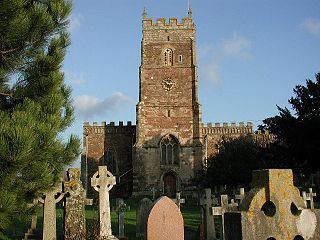
Portbury is a village and civil parish in Somerset, England, within the unitary authority of North Somerset. The parish includes the hamlet Sheepway, which is situated on moorland at the northern edge of the Gordano valley, between the Gordano services on the M5 motorway and Portishead, near the Royal Portbury Dock. The parish has a population of 827.

St Pancras Old Church is a Church of England parish church on Pancras Road, Somers Town, in the London Borough of Camden. Somers Town is an area of the ancient parish and later Metropolitan Borough of St Pancras.

St Mary le Port is a ruined parish church in the centre of Bristol, England, situated in Castle Park on what remains of Mary le Port Street.

Pucklechurch is a civil parish in South Gloucestershire, England, the main settlement of which is the large village of Pucklechurch. The parish also incorporates the hamlet of Shortwood to the west of Pucklechurch village, and Parkfield to the north-west. It has a current population of just over 3200 based on the 2021 census data. The village dates back over a thousand years and was once the site of a royal hunting lodge, as it adjoined a large forest.

The Priory Church of St James, Bristol, is a Grade I listed building in Horsefair, Whitson Street.

Temple Church, also known as Holy Cross Church, is a ruined church in Redcliffe, Bristol, England. It is on the site of a previous, round church of the Knights Templar, which they built on land granted to them in the second quarter of the 12th century by Robert of Gloucester. In 1313 the Knights Hospitaller acquired the church, following the suppression of the Templars, only to lose it in 1540 at the time of the Dissolution of the Monasteries. By the early 14th century, the church served as the parish church for the area known as Temple Fee. From around the same time, the rebuilding of the church on a rectangular plan started. This was completed by 1460, with the construction of a leaning west tower.
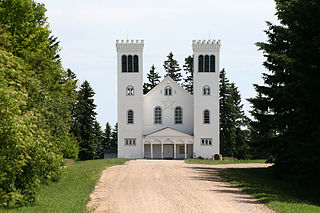
St. Peter's Abbey is in Muenster, Saskatchewan, Canada. It is the oldest Benedictine monastery in Canada. It was founded in 1903.
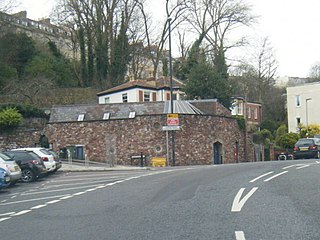
Jacob's Well in Cliftonwood, Bristol, England, is an early medieval structure incorporated into a 19th-century building on the corner of Jacob's Wells Road and Constitution Hill. It is thought to be a Jewish ritual bath.

St Mark's Church is an ancient church on the north-east side of College Green, Bristol, England, built c. 1230. Better known to mediaeval and Tudor historians as the Gaunt's Chapel, it has also been known within Bristol since 1722 as the Lord Mayor's Chapel. It is one of only two churches in England privately owned and used for worship by a city corporation. The other is St Lawrence Jewry, London. It stands opposite St Augustine's Abbey, founded by a member of the Berkeley family of nearby Berkeley Castle, from which it was originally separated by the Abbey's burial ground, now called College Green. It was built as the chapel to the adjacent Gaunt's Hospital, now demolished, founded in 1220. Except for the west front, the church has been enclosed by later adjacent buildings, although the tower is still visible. The church contains some fine late gothic features and a collection of continental stained glass. It is designated by Historic England as a grade I listed building.
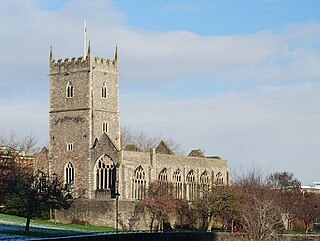
St Peter's Church is a ruined church in Castle Park, Bristol, England. It was bombed during World War II and is now preserved as a memorial.
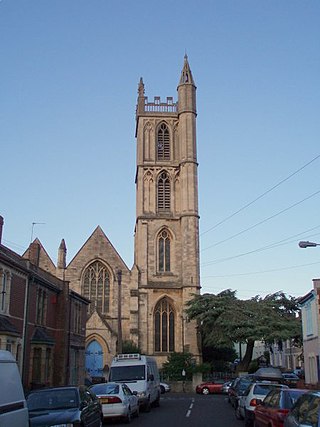
St Werburgh's Church, Bristol, is a former church, now a climbing centre in the St Werburghs area of north-east central Bristol, England. It has been designated on the National Heritage List for England as a Grade II* listed building.

Monkton Deverill is a village and former civil parish, now in the parish of Kingston Deverill, in Wiltshire, England, about five miles south of Warminster and four miles north-east of Mere. The area has been part of Kingston Deverill parish since 1934. It lies on the River Wylye and forms part of a group of villages known as the Upper Deverills. In 1931 the parish had a population of 108.

Blackfriars Leicester, also known as St Clement’s Church, Leicester and St Clement’s Priory, Leicester, is a former priory of the Order of Preachers in Leicester, England. It is also the name of a former civic parish, and a neighbourhood in the city built on and around the site of the old priory.

St Augustine's Abbey was a Benedictine monastery in Canterbury, Kent, England. The abbey was founded in 598 and functioned as a monastery until its dissolution in 1538 during the English Reformation. After the abbey's dissolution, it underwent dismantlement until 1848.
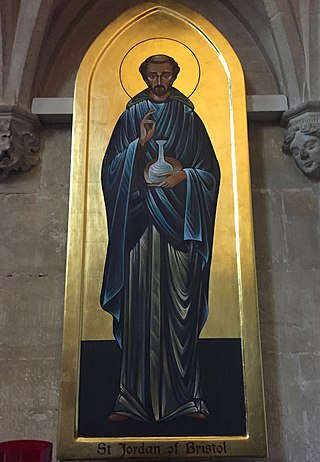
Jordan of Bristol was a saint venerated in Bristol, England, before the Reformation, about whom little is known with certainty.
The Thoresby Society: The Leeds Historical Society is the historical society for the city of Leeds in West Yorkshire, England, and the surrounding district. It was founded in 1889 and named after the historian of Leeds, Ralph Thoresby (1658–1725).



















